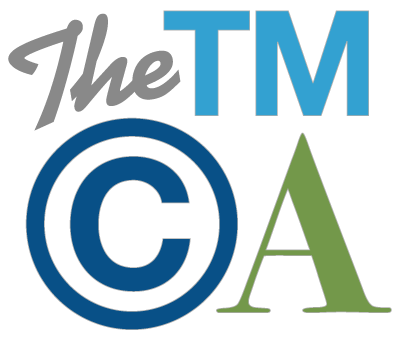Federal Court Travels “Wayback” and Takes Judicial Notice of Internet Archive
 Trademark attorneys often must determine when a third-party used a mark in commerce and the extent and nature of such use, particularly when considering whether to take legal action against a third party for the unauthorized use of a mark. The Internet Archive Wayback Machine (the “Wayback Machine”) provides access to a digital library of archived webpages and touts having saved over 450 billion webpages. More courts are taking judicial notice of archived webpages obtained from the Wayback Machine, the latest being the United States District Court for the District of Kansas in Marten Transport, Ltc. v. Platform Advertising, Inc. d/b/a JustTruckingJobs.com and FindATruckingJob.com, 2:14-cv-02464 (4/29/16)).
Trademark attorneys often must determine when a third-party used a mark in commerce and the extent and nature of such use, particularly when considering whether to take legal action against a third party for the unauthorized use of a mark. The Internet Archive Wayback Machine (the “Wayback Machine”) provides access to a digital library of archived webpages and touts having saved over 450 billion webpages. More courts are taking judicial notice of archived webpages obtained from the Wayback Machine, the latest being the United States District Court for the District of Kansas in Marten Transport, Ltc. v. Platform Advertising, Inc. d/b/a JustTruckingJobs.com and FindATruckingJob.com, 2:14-cv-02464 (4/29/16)).
In 2014, Marten Transport, Ltd. filed suit seeking damages and injunctive relief relating to the unauthorized use of Marten’s service marks by PlattForm Advertising, Inc. on several job advertising websites beginning in 2012 in connection with PlattForm’s solicitation of job applications from truck drivers.
As would typically be expected in this type of case, during discovery plaintiff attempted to learn about the number of times/days that its marks appeared on defendant’s websites and requested documents that would reflect such information. Defendant, however, claimed it did not have copies of any of the accused webpages and could not recreate webpages that existed at a certain period of time. Plaintiff therefore obtained archived screenshots of defendant’s webpages from the Wayback Machine to gain a better understanding on the nature and scope of defendant’s misuse of its marks.
Anticipating that defendant may object to the introduction of such materials, plaintiff filed a motion in limine prior to trial seeking the court’s admission of any screenshots of the defendant’s websites obtained from the Wayback Machine. Specifically, plaintiff argued that the screenshots were authenticated under Fed. R. Evid. 901 based on the declaration and deposition of an employee of the Wayback Machine, who gave testimony that the screenshots were “true and accurate electronic copies” of webpages archived by the Wayback Machine, and that he had a “very, very high level of trust” in the accuracy of the screenshots. Plaintiff also argued the court should take judicial notice of the webpage screenshots under Fed. R. Evid. 201.
The court ruled that the employee’s testimony was sufficient to lay a proper foundation under Rule 901. It specifically noted that the screenshots were being offered to show that Marten’s “mark[s] appeared on PlattForm’s sites on particular dates, and the fact that the Wayback Machine doesn’t capture everything that was on those sites does not bear on whether the things that were captured were in fact on those sites.” The court also noted that “[t]here is no suggestion or evidence from PlattForm that the Wayback Machine ever adds material to sites (other than a Wayback Machine toolbar and coding that allows links to work.)” The court further found that the Wayback Machine employee had a “very, very high level of trust” in the accuracy of the screenshots. On this basis, the court found the screenshots properly authenticated.
Significantly, however, the court went on to hold that authentication was not necessary and that it, not only could, but must take judicial notice of the fact that plaintiff’s mark appeared on defendant’s websites as shown in the screenshots.
Federal Rule of Evidence 201(b) provides for judicial notice of a fact “that is not subject to reasonable dispute because it: (1) is generally known within the trial court’s territorial jurisdiction; or (2) can be accurately and readily determined from sources whose accuracy cannot reasonably be questioned.” The Rules further state that a court “must take judicial notice if a party requests it and the court is supplied with the necessary information.” Fed. R. Evid. 201(c).
In deciding the question of judicial notice, the court noted that the defendant offered no reason to believe that the Wayback Machine adds information to the screenshots at the time those screenshots were captured. Thus, the accuracy of the screenshots could not reasonably be questioned. The court also noted other courts commonly take judicial notice of webpages from the Wayback Machine.
The trend of courts taking judicial notice of archived webpages from the Wayback Machine provides parties with greater assurance that, should a dispute reach trial, such material will be allowed into evidence and, moreover, streamlines the process of getting such material into evidence. In light of this trend, counsel has reason to regularly search the Wayback Machine for evidence of trademark use by suspected infringers. Archived screenshots can identify use of a mark by a third-party on a particular date and the nature and scope of such use. Such information can greatly influence the legal strategy employed by counsel, including whether to send an initial cease and desist letter and the tone of such letter.







